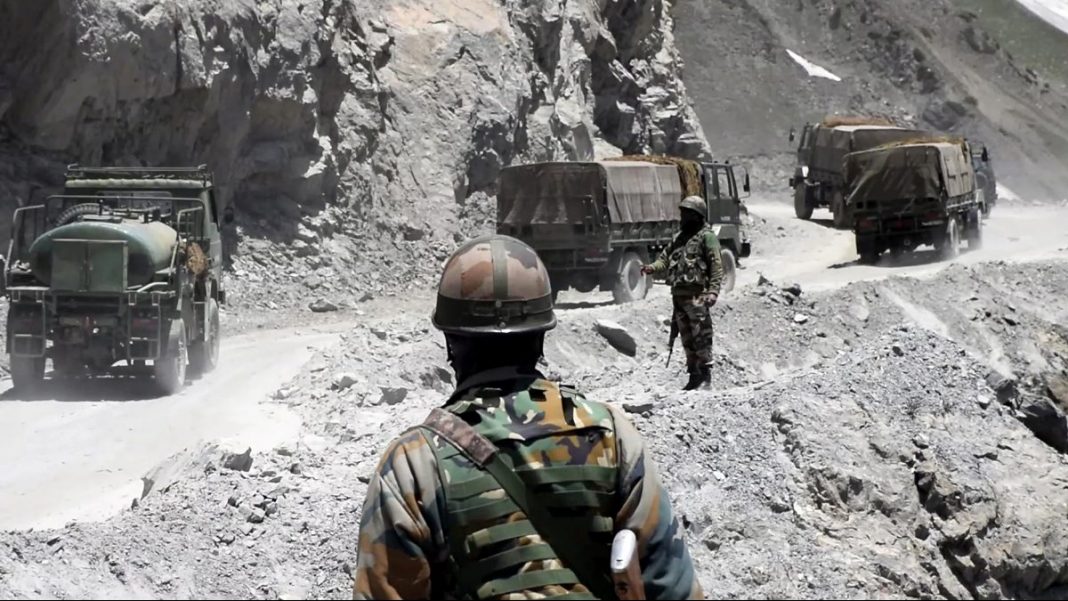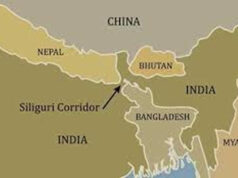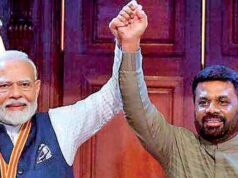In mountains, China’s military prowess has a vertical limit. 1962 is a half truth
By
Col Vivek Chada, Retd

What happens when two competing and nearly comparable military powers like China and India deploy their military might against each other in the Himalayas?
China’s misadventure into the Indian territory is premised on the vast differential in the size of both countries’ economies and the military capability gap that has only grown since the two nations went to war in 1962. However, even as this is true on paper, its implications as they translate into actions are often lost sight of.
Military conflict was and will remain a clash of wills, and not merely weapons in varying numbers and of different generations. A war can be lost despite occupying contested land or even uncontested land over the years.
What happens when competing and nearly comparable military powers deploy their might against each other? What if they do it in an area where the very concept of military operations as applicable to plains and deserts is vastly different? And what if it all plays out in the backdrop of obvious caution forced by the shadow of nuclear weapons on both sides? Some of these questions can be best answered by highlighting the characteristics of fighting a battle in the mountains.
Mountains by their very nature favour a defender. An attacker has to create a situation wherein a defender is outwitted and loses nerve to be defeated decisively. Since there are very few countries that have actually fought in high altitude areas (over 9,000 feet above mean sea level), here are a few examples that relate to experiences within the subcontinent.
During the 1947-48 operations in Jammu and Kashmir, the conflict was inching towards its terminal phase. The Army was finding it difficult to break through the Zojila Pass, which was critical for the defence of the area. It was Major General K.S. Thimayya (later General and Chief of Army Staff) who came up with the audacious plan to lead the attack with tanks in November 1948, despite the challenging terrain and local ground conditions at approximately 11,500 feet.
The 7 Cavalry, led by Lieutenant Colonel Rajinder Singh “Sparrow”, brought forward their tanks, the Stuarts, dismantled without turrets, duly camouflaged, to Srinagar and from there to the battle zone. Thimayya sat on the leading tank, as the attacking forces surprised the Pakistanis and achieved a complete rout of the enemy forces, forcing them to flee the battlefield. It was not the numbers but the manner in which the forces were employed that played a crucial role in the battle.
Almost 17 years later, the battle of Haji Pir was fought in 1965. It witnessed Major R.S. Dayal (later Lieutenant General and Western Army Commander) take a long and arduous march to reach close to enemy positions. He successfully evicted the enemy by virtue of achieving complete surprise at the objective. He did this despite a force ratio of 1:1, which is considered grossly inadequate even in the plains. The tactical victory at Haji Pir pass facilitated the complete rout of the enemy.
More recently, in Kargil in 1999, the Indian armed forces proved that they could achieve what few armies would even dare to attempt, at altitudes ranging from 14,000-16,000 feet. Despite the unparalleled feats of valour, progress was slow and gradual, spread over months. The success at Kargil must be seen in the right context to understand the sheer scale of the achievement, especially when it is compared with Siachen Glacier.
A decade prior to the Kargil conflict, Pakistan, stung by India’s control over the Siachen Glacier area, made multiple attempts at evicting the Indian Army from the Saltoro Ridge, but failed every single time. Their attempt also includes an operation launched by then Brigadier Parvez Musharraf in 1987. That indicates the nature of the challenge fighting in mountains, and especially in high altitude regions, presents.
What went wrong in 1962
Past feats notwithstanding, the 1962 war stands out as a clear failure. However, it is relevant to place its reality in perspective. There is little doubt that the senior leadership of the Army fell short of its past credible standards. And this is not limited to the oft-quoted example of Lt Gen B.M. Kaul. The defeat of the Army, especially in the Eastern Sector, took place in the minds of the military and political leaders, much before it did in the battlefield. In fact, even where the Army was defeated, there were bright spots like the Battle of Namka Chu in Arunachal Pradesh or the Battle of Rezang La in Ladakh, which proved that the soldiers and their immediate commanders, given the right leadership, could have stopped the Chinese in their tracks.
Less than five years later in 1967, it was proved by Maj Gen Sagat Singh during the skirmish at Nathu La. It was during this border clash that the Chinese withdrew with far more casualties than the Indian side, despite them firing the first salvo. One wishes that this incident too was more widely known just as those associated with the 1962 are.
Fighting in the mountains, and that too at the kind of altitude that exists along the LAC, is difficult even in the best of times. And when the opposition is determined and well led, there is little chance of achieving outright victory. Unlike the plains and deserts, where mechanised forces can sweep the battlefield, deploying infantry along spurs is an uphill task. The effect of artillery is reduced due to the impact of altitude and issues related to accuracy because of the small target are presented. A minor variation in weather conditions or angle of fire can take shells well beyond the intended target. Air bombing also suffers from similar constraints as operations in Kargil proved in 1999.
So, the size of an army that has not experienced a bullet fired in anger for the last 40 years must be seen in the context of existing realities. Conversely, the impact of a group of highly trained and experienced sub-units, inserted at the point of decision, can be far greater as witnessed in the battle of Haji Pir pass. Similarly, the readiness of an acclimatised force is more important than formations taken in by the miracles that technology can conjure. Mountains have and will continue to prove that when all else fails, it is the foot soldier who can capture and hold ground.
The backdrop of this reality will suggest why the Chinese State-controlled media repeatedly brings up 1962. They realise that certain sections on the Indian side, despite Nathu La in 1967, had created a defensive cocoon around themselves. This section did not lose confidence in their armed forces, which proved their mettle soon thereafter in 1971. Instead, and worse, they doubted their own ability to assert and stand up to a bully.
Conflict is neither desirable nor should the wise invite it. However, it is equally important to understand that military reality in the context of India and China is closer to Nathu La of 1967 rather than Sela of 1962.




